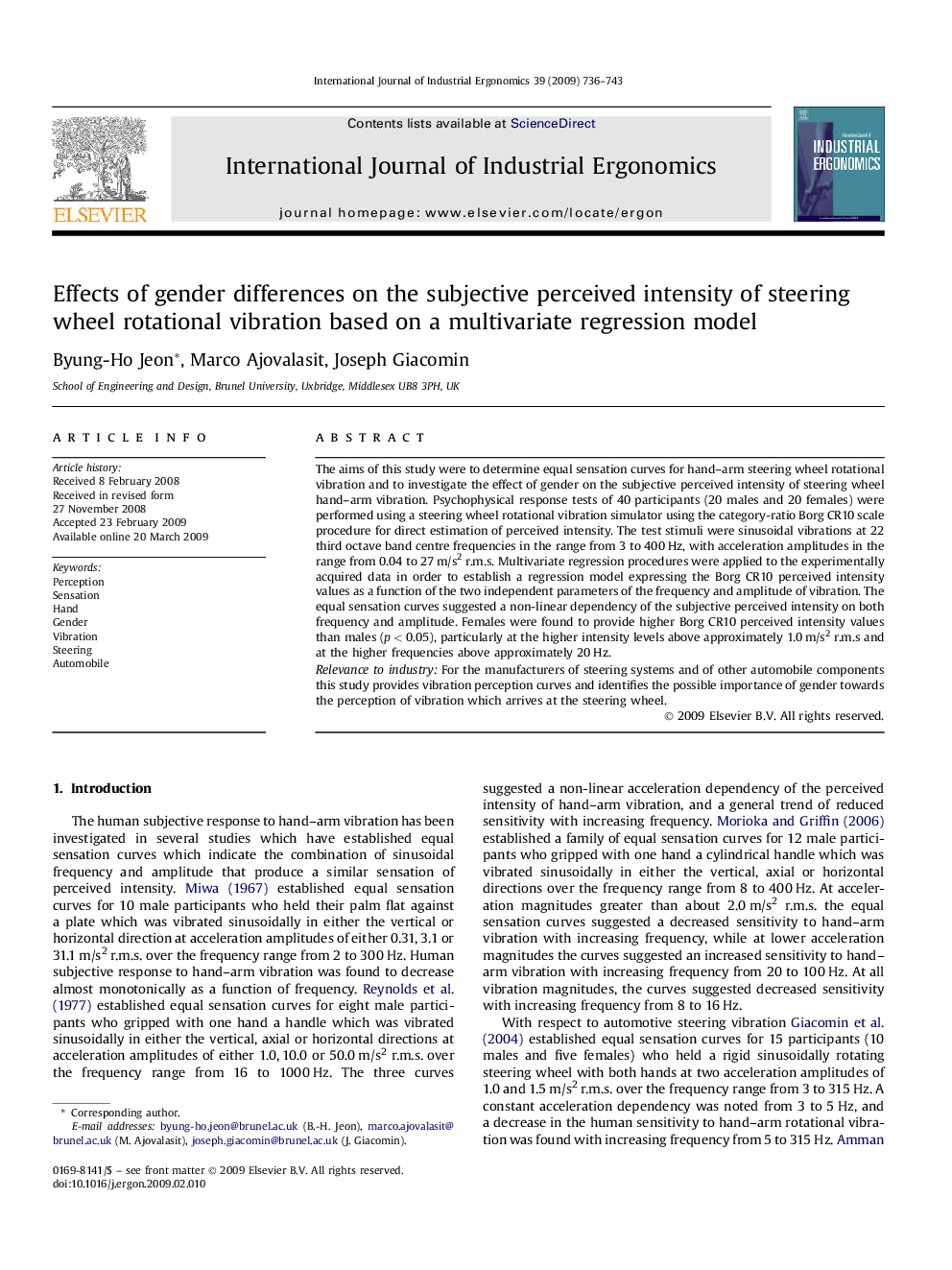| Article ID | Journal | Published Year | Pages | File Type |
|---|---|---|---|---|
| 1096750 | International Journal of Industrial Ergonomics | 2009 | 8 Pages |
The aims of this study were to determine equal sensation curves for hand–arm steering wheel rotational vibration and to investigate the effect of gender on the subjective perceived intensity of steering wheel hand–arm vibration. Psychophysical response tests of 40 participants (20 males and 20 females) were performed using a steering wheel rotational vibration simulator using the category-ratio Borg CR10 scale procedure for direct estimation of perceived intensity. The test stimuli were sinusoidal vibrations at 22 third octave band centre frequencies in the range from 3 to 400 Hz, with acceleration amplitudes in the range from 0.04 to 27 m/s2 r.m.s. Multivariate regression procedures were applied to the experimentally acquired data in order to establish a regression model expressing the Borg CR10 perceived intensity values as a function of the two independent parameters of the frequency and amplitude of vibration. The equal sensation curves suggested a non-linear dependency of the subjective perceived intensity on both frequency and amplitude. Females were found to provide higher Borg CR10 perceived intensity values than males (p < 0.05), particularly at the higher intensity levels above approximately 1.0 m/s2 r.m.s and at the higher frequencies above approximately 20 Hz.Relevance to industryFor the manufacturers of steering systems and of other automobile components this study provides vibration perception curves and identifies the possible importance of gender towards the perception of vibration which arrives at the steering wheel.
